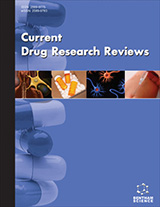Abstract
Background and Objective: Hepatic ischemia-reperfusion injury (HIRI) results in serious complications after liver resection and transplantation. Edaravone (ED) has a protective effect on IRI. This study was designed to evaluate whether ED could protect the liver of rats from HIRI injury and explored its exosomal miRNA-related mechanism.
Methods: The sham group, hepatic ischemia/reperfusion (IR group), and hepatic ischemia/reperfusion + edaravone (ED group) models were established. We determined the protective effect of ED by measuring alanine aminotransferase (ALT), aspartate aminotransferase (AST), malondialdehyde (MDA), superoxide dismutase (SOD); enzyme-linked immunosorbent assay for tumor necrosis factor- α (TNF-α) and interleukin-1β (IL-1β); hematoxylin-eosin staining and immunohistochemistry for histopathological changes. Exosomal miRNAs were subjected to second-generation sequencing to identify their differential expression. The results were analyzed using bioinformatics methods and validated using real-time quantitative polymerase chain reaction (RT-qPCR).
Results: HIRI rats showed higher levels of ALT, AST, oxidative stress, and inflammatory markers; ED attenuated these effects. The sequencing results showed 6 upregulated and 13 downregulated miRNAs in the IR vs. sham groups, 10 upregulated and 10 downregulated miRNAs in the ED vs. IR groups. PC-3p-190-42101 was screened as an overlapping differentially expressed miRNA, and RT-qPCR validation showed that its expression in HIRI rats was significantly decreased; ED prevented this downregulation. Moreover, the expression of PC-3P-190-42101 was significantly correlated with the level of inflammatory factors.
Conclusion: These findings indicate that ED can regulate the level of inflammatory factors by affecting the expression of miRNA PC-3p-190-42101 in plasma exosomes to protect the liver from IRI.
Keywords: Hepatic ischemia-reperfusion injury, edaravone, oxidative stress, inflammatory, exosomes, microRNAs.
Graphical Abstract
[http://dx.doi.org/10.1152/ajpgi.00342.2002] [PMID: 12488232]
[http://dx.doi.org/10.3390/cells8101131] [PMID: 31547621]
[http://dx.doi.org/10.1053/jhep.2000.9323] [PMID: 10915720]
[http://dx.doi.org/10.1016/S0014-2999(03)01302-5] [PMID: 12586209]
[http://dx.doi.org/10.1038/labinvest.2017.90] [PMID: 28920945]
[http://dx.doi.org/10.1097/00003246-200201000-00024] [PMID: 11902258]
[http://dx.doi.org/10.1161/01.STR.0000182241.07096.06] [PMID: 16166574]
[http://dx.doi.org/10.1097/01.TP.0000165092.07375.C9] [PMID: 16041266]
[http://dx.doi.org/10.1016/S0024-3205(02)01965-3] [PMID: 12215372]
[http://dx.doi.org/10.3748/wjg.v18.i27.3520] [PMID: 22826616]
[http://dx.doi.org/10.1186/s10020-019-0122-1] [PMID: 31829167]
[http://dx.doi.org/10.1016/S0092-8674(04)00045-5] [PMID: 14744438]
[http://dx.doi.org/10.1371/journal.pone.0148677] [PMID: 26859886]
[http://dx.doi.org/10.1002/lt.24606] [PMID: 27541946]
[http://dx.doi.org/10.1038/s41418-018-0120-9] [PMID: 29769640]
[http://dx.doi.org/10.1016/j.phrs.2020.104783] [PMID: 32224251]
[http://dx.doi.org/10.1097/TP.0000000000001765] [PMID: 28640790]
[http://dx.doi.org/10.1089/omi.2009.0035] [PMID: 19780683]
[http://dx.doi.org/10.3390/cells8040307] [PMID: 30987213]
[http://dx.doi.org/10.1096/fj.201600696R] [PMID: 27605546]
[http://dx.doi.org/10.1089/scd.2019.0194] [PMID: 31969065]
[http://dx.doi.org/10.1089/scd.2019.0085] [PMID: 31495270]
[http://dx.doi.org/10.1096/fj.201800131RR] [PMID: 30226809]
[http://dx.doi.org/10.1002/jcp.29264] [PMID: 31566731]
[http://dx.doi.org/10.1002/iub.2147] [PMID: 31433911]
[http://dx.doi.org/10.1097/TP.0000000000002123] [PMID: 29424767]
[http://dx.doi.org/10.1016/j.jhep.2015.07.030] [PMID: 26254847]
[http://dx.doi.org/10.1016/j.jss.2006.06.033] [PMID: 17064733]
[http://dx.doi.org/10.1097/00007890-199306000-00011] [PMID: 7685932]
[http://dx.doi.org/10.1016/j.gassur.2004.02.011] [PMID: 15239999]
[http://dx.doi.org/10.1016/S0014-2999(03)01463-8] [PMID: 12650846]
[http://dx.doi.org/10.1016/j.jhep.2004.09.018] [PMID: 15629513]
[http://dx.doi.org/10.1016/j.jss.2014.11.011] [PMID: 25481526]
[http://dx.doi.org/10.1111/j.1432-2277.2005.00094.x] [PMID: 15948865]
[http://dx.doi.org/10.1002/bjs.4401] [PMID: 14760666]
[http://dx.doi.org/10.4062/biomolther.2016.174] [PMID: 28208010]
[http://dx.doi.org/10.1161/CIRCRESAHA.118.314635] [PMID: 30879399]
[http://dx.doi.org/10.1038/s41419-018-0274-x] [PMID: 29476052]
[http://dx.doi.org/10.2147/NDT.S173632] [PMID: 30425495]
[http://dx.doi.org/10.1016/j.thromres.2019.02.002] [PMID: 30844685]
[http://dx.doi.org/10.1016/j.kint.2016.07.015] [PMID: 27650731]
[http://dx.doi.org/10.1590/1414-431x20199106] [PMID: 31994603]
[http://dx.doi.org/10.1016/j.expneurol.2019.01.009] [PMID: 30703362]
[http://dx.doi.org/10.1155/2012/802384] [PMID: 22675337]
[http://dx.doi.org/10.1016/j.lfs.2006.06.024] [PMID: 16828807]
[http://dx.doi.org/10.1002/hep.21963] [PMID: 18085707]
[http://dx.doi.org/10.1016/j.jhep.2007.07.030] [PMID: 17936399]
[http://dx.doi.org/10.1111/bph.12229] [PMID: 23647130]
[http://dx.doi.org/10.18632/oncotarget.21151] [PMID: 29156799]
[http://dx.doi.org/10.1038/34184] [PMID: 9422509]
[PMID: 12956430]
[http://dx.doi.org/10.1159/000486570] [PMID: 29408825]
[http://dx.doi.org/10.1155/2010/417646]
[http://dx.doi.org/10.1124/jpet.107.135327] [PMID: 18287212]
[http://dx.doi.org/10.1016/j.yjmcc.2006.03.422] [PMID: 16698033]


























